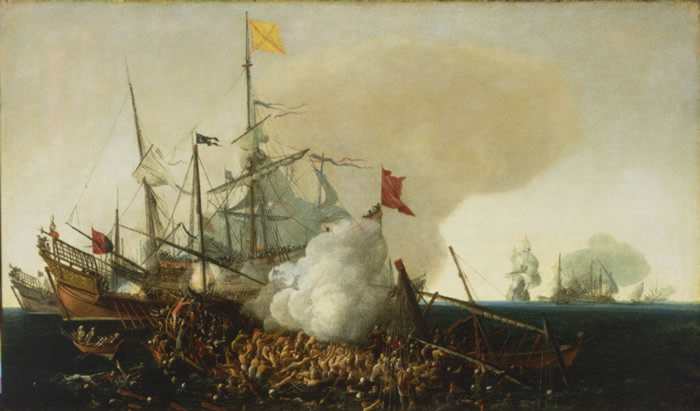
For reservations to experience “nkwiluntàmën: I long for it; I am lonesome for it (such as the sound of a drum)” by Indigenous artist Nathan Young, please go to https://nkwiluntamen.com/
Exploring the Artifacts: Giles Penn’s Portrait
- January 5, 2012
- Posted By: Pennsbury Manor
I love portraits of people. I can’t help but wonder about the lives behind the faces. When I was new at Pennsbury, I was told that the portrait in the Common Parlor was of Penn’s grandfather, Giles Penn. I accepted that fact at face value (pun intended). But over time I began to question how we know it is Giles Penn, and further, what did the man do to warrant having his portrait painted?
 This portrait surfaced in England in 1936. The owner obtained the painting from the Pennington Family. There is a type-written tag on the back of the portrait that identifies the subject as Admiral Penn. However, the man looks nothing like the other portraits of Admiral Penn. Furthermore, the style of clothing in the portrait and the date of 1625 makes this too early for Admiral Penn who was probably born in 1621.
This portrait surfaced in England in 1936. The owner obtained the painting from the Pennington Family. There is a type-written tag on the back of the portrait that identifies the subject as Admiral Penn. However, the man looks nothing like the other portraits of Admiral Penn. Furthermore, the style of clothing in the portrait and the date of 1625 makes this too early for Admiral Penn who was probably born in 1621.
A long tradition suggests that the painting depicts Giles Penn, father of Admiral Penn and grandfather to our own William Penn. That makes more sense, except that Giles would be approximately 24 years old at the time of this painting, and the sitter looks older than that. So maybe the portrait is of Giles, and maybe it isn’t.
So for fun, let’s pretend that it’s definitely Giles. Sitting for a portrait was not a common experience, so clearly he was “somebody.”

Giles was born in 1601. He became a seaman involved in the highly lucrative and dangerous trade along the Barbary Coast in North Africa. Attacks from pirates became increasingly bold as the 17th Century progressed. By the 1620s, Barbary Pirates were not only attacking ships but raiding settlements along the European coast as far as Iceland. Captives from these raids were sold as slaves in Africa, and tens of thousands Europeans were held. (St. Vincent de Paul and Miguel de Cervantes were among the small number of captives who managed to achieve freedom). Despite the risks, young William went to sea with his father starting at age 10-12.
In 1636, Giles Penn was commissioned by King Charles I to command an attack on Salé in modern day Morocco, where it was believed a thousand Englishmen were held. The attack and blockade was very successful as 339 captives were released. Giles was rewarded with the consulship of Salé where he arrived in 1637 with his 16 year-old son, William. William did not stay in Morocco, however, as we all know. In 1638 William became the captain of his own ship at age 17.
Giles Penn died c. 1664, probably in Morocco.
Written by Mary Ellyn Kunz, Museum Educator